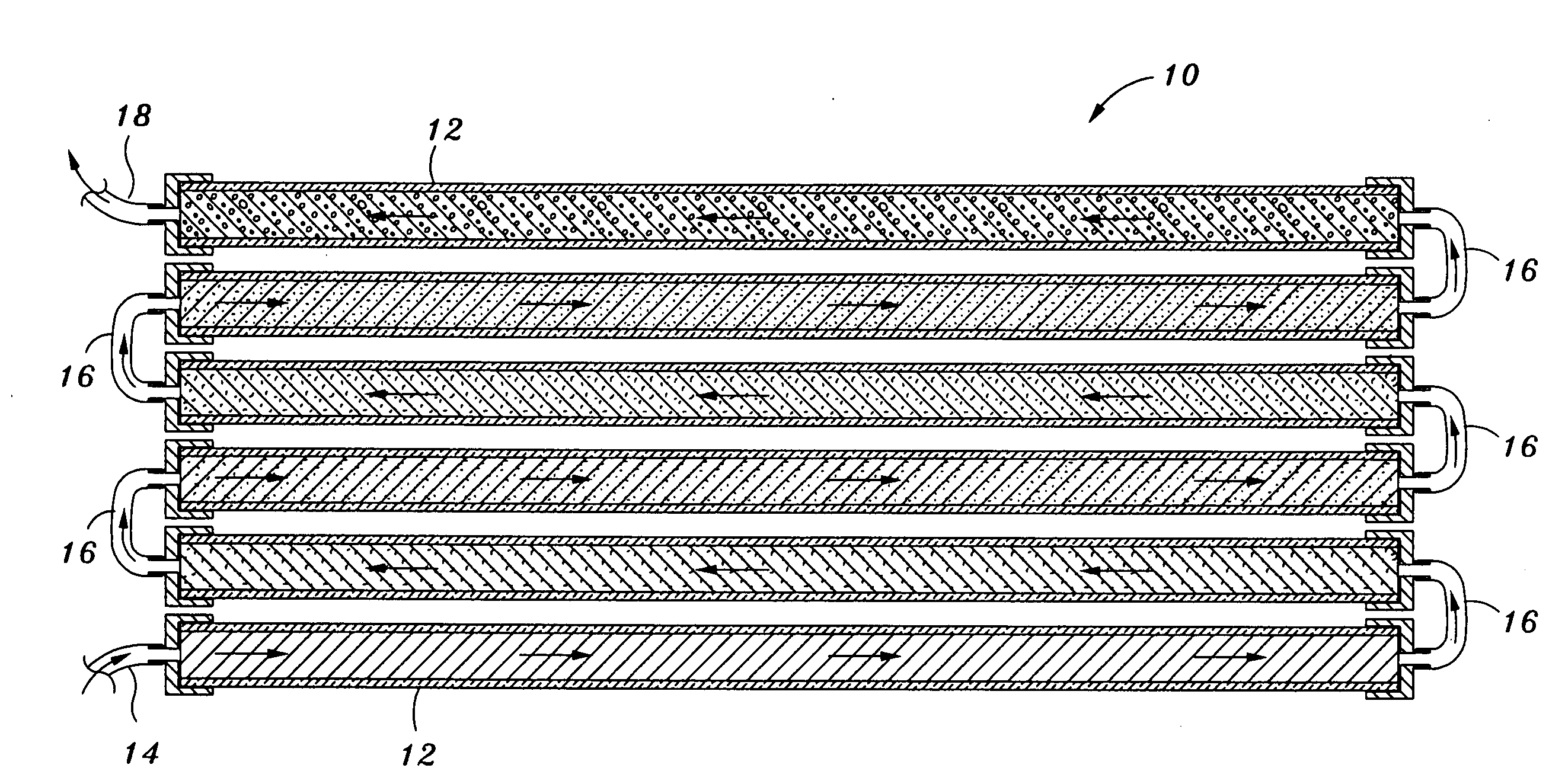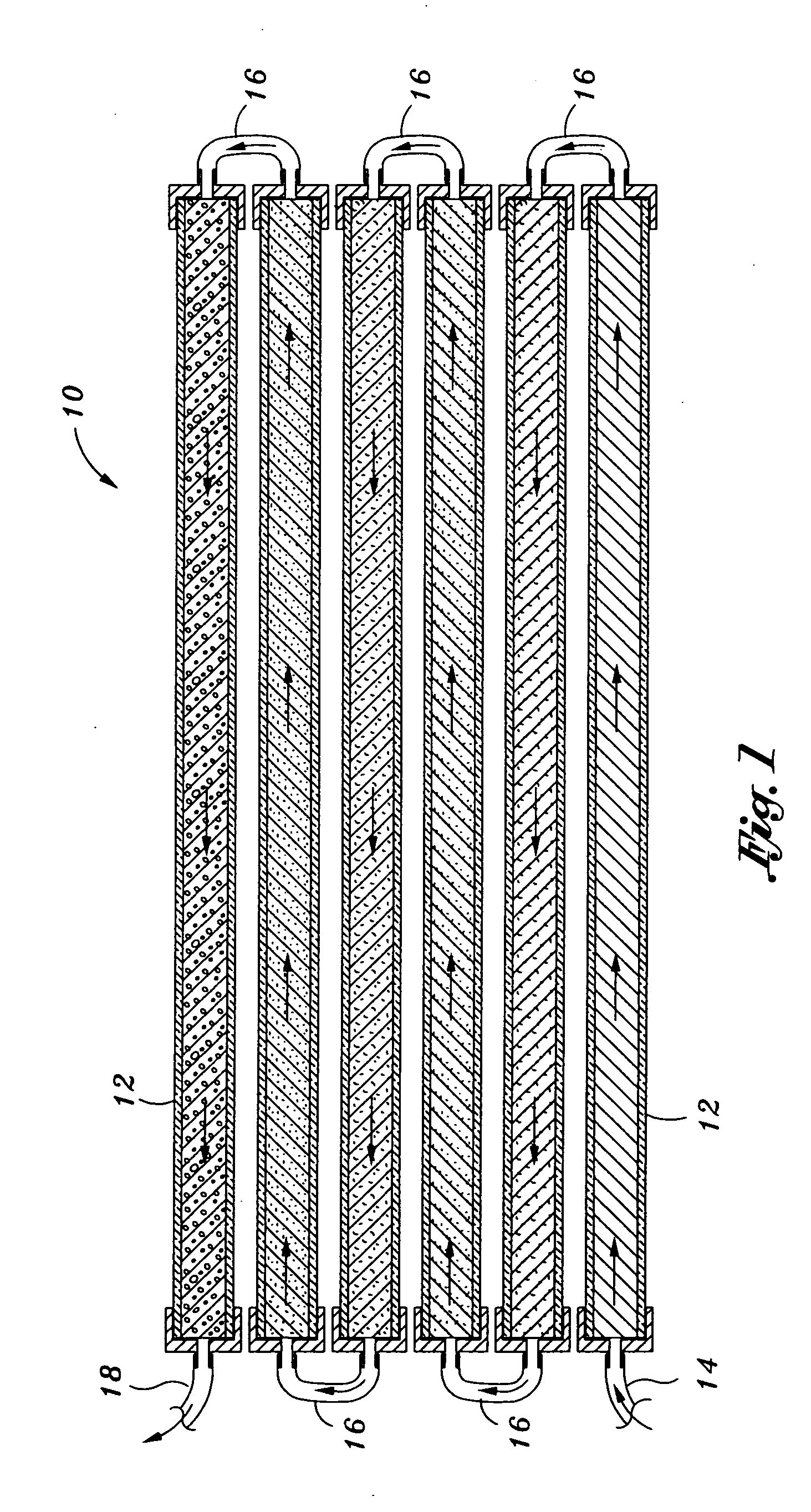Porous ceramics
a porous ceramic and ceramic material technology, applied in water/sewage treatment by ion exchange, separation process, filtration separation, etc., can solve the problems of reducing the ability of ceramics to sequester heavy metal ions, increasing the strength and stability of sintered clay, and reducing the cost of a loss in cation exchange capacity (cec). the effect of physical breakag
- Summary
- Abstract
- Description
- Claims
- Application Information
AI Technical Summary
Benefits of technology
Problems solved by technology
Method used
Image
Examples
Embodiment Construction
[0023]One embodiment of the present invention envisions a porous ceramic material for use in removing pollutants from water. The ceramic material is formed by first drying a high-Cation Exchange Capacity (CEC) clay-water mixture at a low temperature that could vary from air drying at room temperature (i.e., about 20° C.) to about 600° C. Preferably the clay-water mixture is dried at a temperature between 100° C. to 600° C. During this drying stage, water is removed from the clay resulting in an overall volume reduction. Next, the clay is calcined at a temperature between about 700° C. to about 1175° C. Finally, the calcined clay is processed to a larger than colloidal size. The drying and calcining processes may be accomplished by any method known within the art, including firing the clay within a kiln. By drying and calcining the clay, a ceramic matrix is formed thereby causing an increase in the strength and stability of the clay. However, by using the relatively low temperatures ...
PUM
| Property | Measurement | Unit |
|---|---|---|
| temperature | aaaaa | aaaaa |
| temperature | aaaaa | aaaaa |
| diameter | aaaaa | aaaaa |
Abstract
Description
Claims
Application Information
 Login to View More
Login to View More - R&D
- Intellectual Property
- Life Sciences
- Materials
- Tech Scout
- Unparalleled Data Quality
- Higher Quality Content
- 60% Fewer Hallucinations
Browse by: Latest US Patents, China's latest patents, Technical Efficacy Thesaurus, Application Domain, Technology Topic, Popular Technical Reports.
© 2025 PatSnap. All rights reserved.Legal|Privacy policy|Modern Slavery Act Transparency Statement|Sitemap|About US| Contact US: help@patsnap.com



